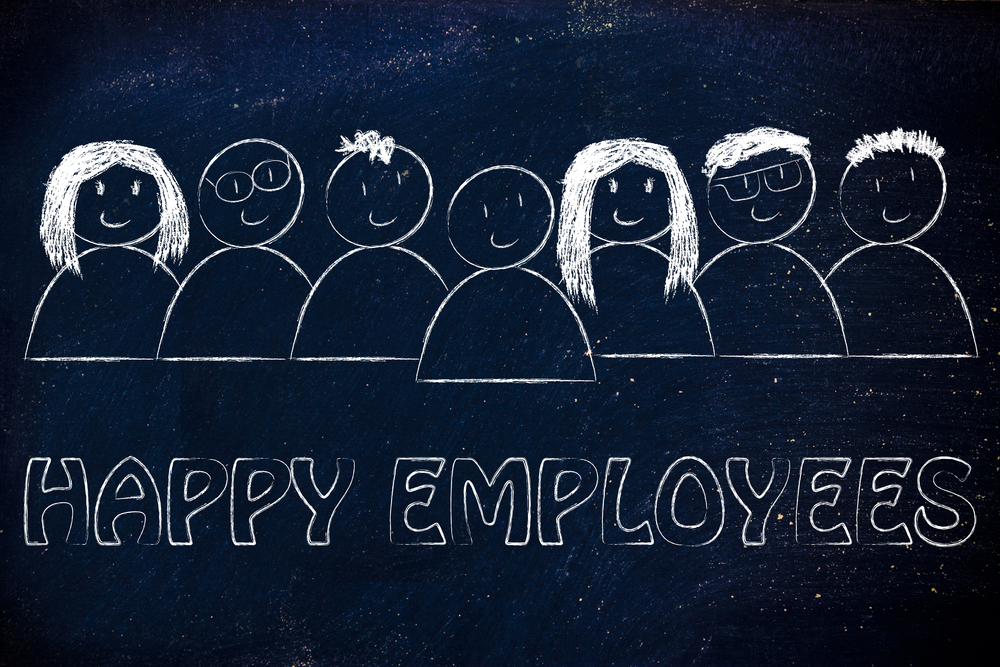Keeping Employees Engaged – The Route To Corporate Success
A happy workforce is the key to sustained competitive advantage and accelerated business performance

Employee engagement has been shown to have a statistically significant relationship with retention, productivity, customer satisfaction, and, eventually, profitability. It is clear that organisations who engage more deeply with the workforce transform their employees into brand ambassadors whilst achieving business results.
The year gone by has changed not only the way companies do business, but has also fundamentally altered the rules of engaging with employees in organisations, giving rise to a hybrid model where technology has been leveraged exponentially to enable and support employees. Human Resource professionals have been right at the forefront of these testing times, managing the most crucial asset of organisations – their people. How is HR helping organisations drive business results when the workforce has been geographically dispersed?
It has become imperative for organisations to review, amend and alter existing people management policies and make necessary changes, in line with the new realities. Managing distance by adopting digital technologies has become the norm, and the same tools are being used to effectuate the right culture to keep employees connected and motivated.
The most important factor in employee engagement is how much they understand what is expected of them and how motivated and inspired they are about their role and contribution. Is there an element of delight, is there enough challenge to keep them motivated? How loyal do they feel towards the organisation? Would they be good advocates?
In order for the answer to be yes to these questions, the work needs to start with a structured hiring model that can track and attract the right quality of talent externally and internally. A well-structured hiring process, that takes into account future needs and anticipates dynamic change is the first essential element of the HR framework – simply put, hiring the right candidates. This requires a mix of people and technology intervention. Today, there are many online hiring options, including social media Apps that assist with the hiring journey. This includes tools like predictive hiring models as well as facial recognition software that are used for ascertaining authentic candidature and for weeding out duplicitous hiring. Once selection is done, the on-boarding experience that companies offer has the potential to deliver a strong sense of excitement and belongingness. For instance, at Tata AIA, we have something called Swagatam, which in these times has become e-Swagatam. Line managers, team members and HR staff personally welcome each candidate and ease them into the organisation, making them feel welcomed, important and excited about the journey ahead. This is the start of the engagement process, so getting the hiring right is the first step and making them feel part of the family is an equally important next step, followed by delineating clearly defined roles and structures as well as offering clarity on expectation and deliverables.
Learning and Development or professional training are the bedrock of successful organisations. Employee growth has two aspects – personal growth which entails upskilling as well as professional growth within the organisation. Designing function-wise competency frameworks to encourage growth for individuals is vital. The framework helps identify strengths and areas of improvement for employees and develop action plans that can positively impact the team's engagement. Setting apart talent and ensuring they stay engaged is a required prerogative. Our Talent interventions have ensured that the development journey continues unhampered albeit digitally. The experience should not change is what we aim to achieve.
The one thing that has been fundamentally impacted in the last one year is day to day engagement with employees. In this time, we have seen the emergence of a kind of Professional-Personal integration. As a result, the specific 8-hour workday has turned into working 24/7 in tranches, to accommodate and balance both professional responsibilities with household responsibilities. At this time, when pressure is high and the situation continues to remain uncertain, employee wellbeing and safety should be top priority for organisations.
What separates average organisations from highly valued organisations is how well they look after their people to ensure their physical, mental, and emotional wellbeing. Measures like e-counselling with doctors, tips for healthy eating from dieticians, and support from mental health counsellors should be actively adopted. There are plenty of digital health and fitness programmes as well as overall wellbeing programs that have been embraced by organisations. Efforts to engage families along with employees themselves, have proven to work exceptionally well in these times. Fun activities like contests, quizzes, virtual Family Carnivals and periodic virtual get-togethers are some measures that employees have enjoyed with their family members and have proved to be a huge success in making them feel valued, engaged and integral to the organisation. These are effective engagement tools that provide a platform to showcase talent, not just for employees but their families too, who get to celebrate professional success and cultural bonding with other members of the organisation.
Recognition plays an equally important role in creating a high-performance work culture and ensures that the motivation remains at an all-time high especially during testing times like these.
Devising new blueprints of rewarding employees for not only their performance, but also, right behaviour is instrumental in ensuring a highly charged workforce. Inclusion of family members in this rewards and recognition process is an imperative especially since the employees are mostly working from home and thereby are ably supported by family members. Institutionalizing rewards for family is what has set us apart as a company, and we continue to stay true to our value - people - our core encompassing the employees and their near and dear ones in all that we do.
As champions of organisational culture, HR teams need to employ these measures to drive engagement and productivity especially in a time of no direct supervision where employees are meant to be self-starters. As such, innovative HR practices need to take centre-stage, instead of protocol-based HR processes.
The role of communication is also very vital today, especially while addressing geographically dispersed workforces. Communicating simply, authentically, and frequently and adopting simple communication rules like focusing on visual medium and short-form, less structured communication is preferred in this time.
Research has consistently proven the direct linkage between employee engagement, customer satisfaction, and revenue growth. Engaged employees create a happy workforce which is the key to sustained competitive advantage and accelerated business performance. Therefore, employee engagement is no more just a nice-to-have activity in the organisation; it has become critical and integral for business success.
The author is EVP and CHRO, Tata AIA Life Insurance
DISCLAIMER: Views expressed are the authors' own, and Outlook Money does not necessarily subscribe to them. Outlook Money shall not be responsible for any damage caused to any person/organisation directly or indirectly.









